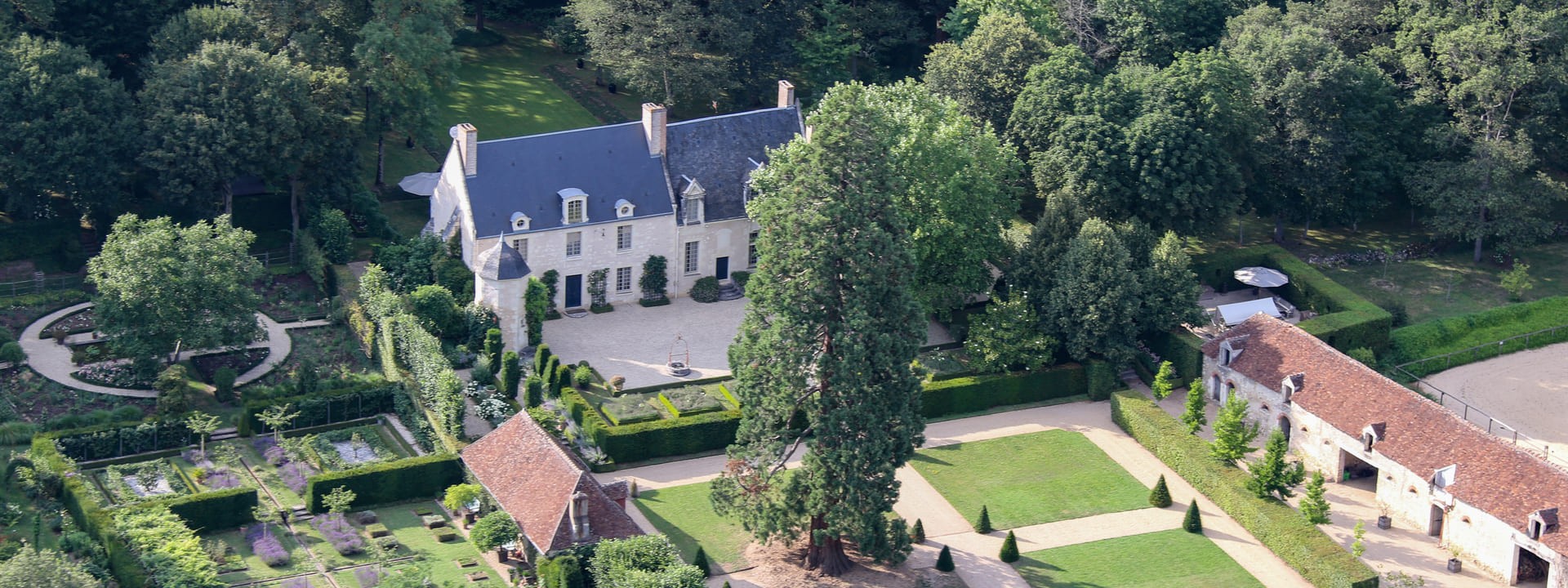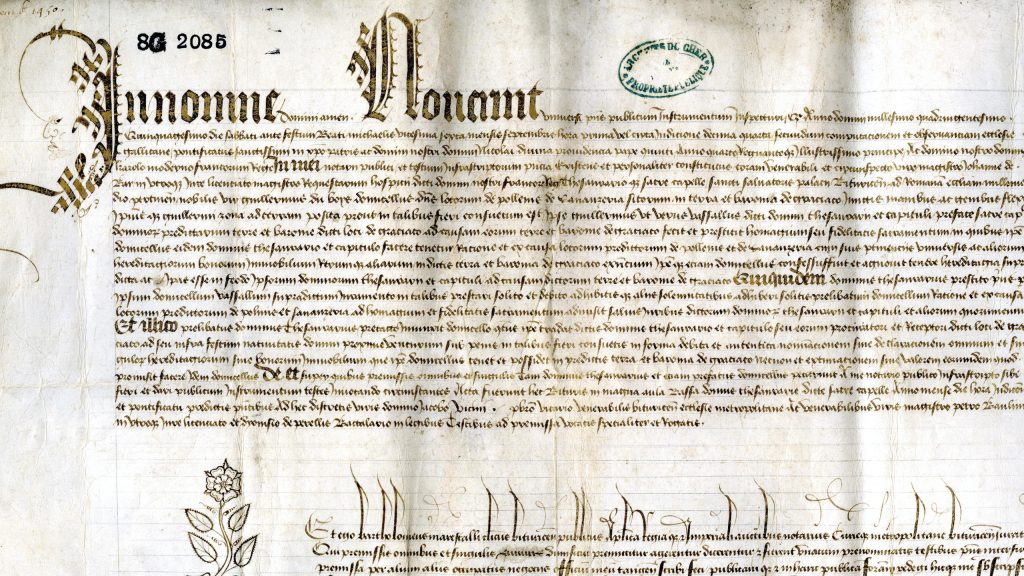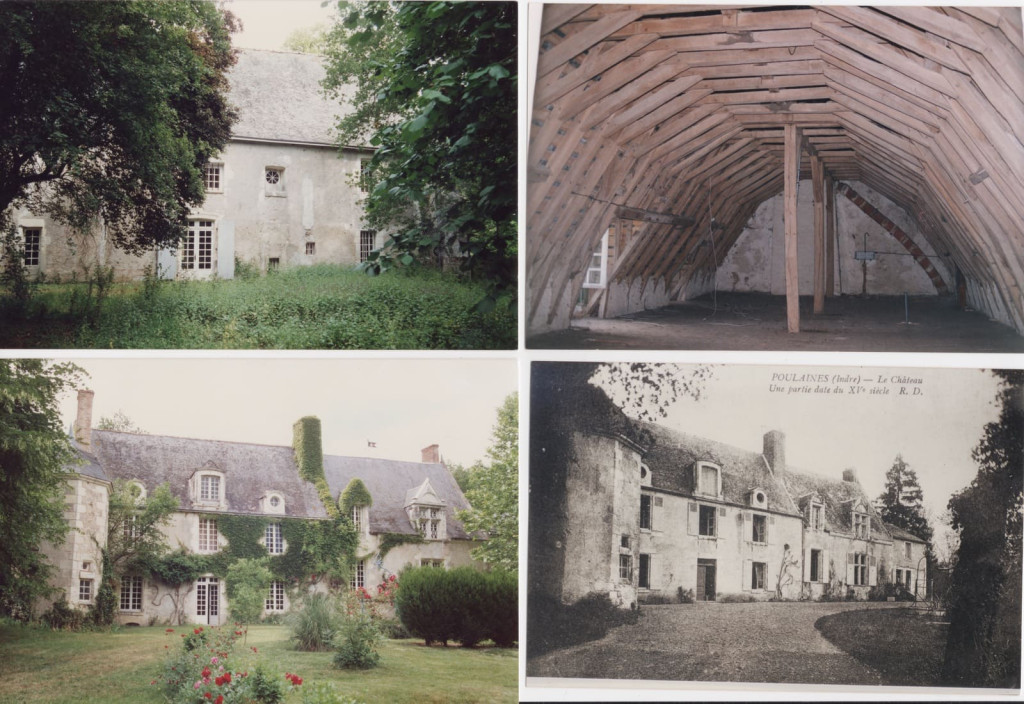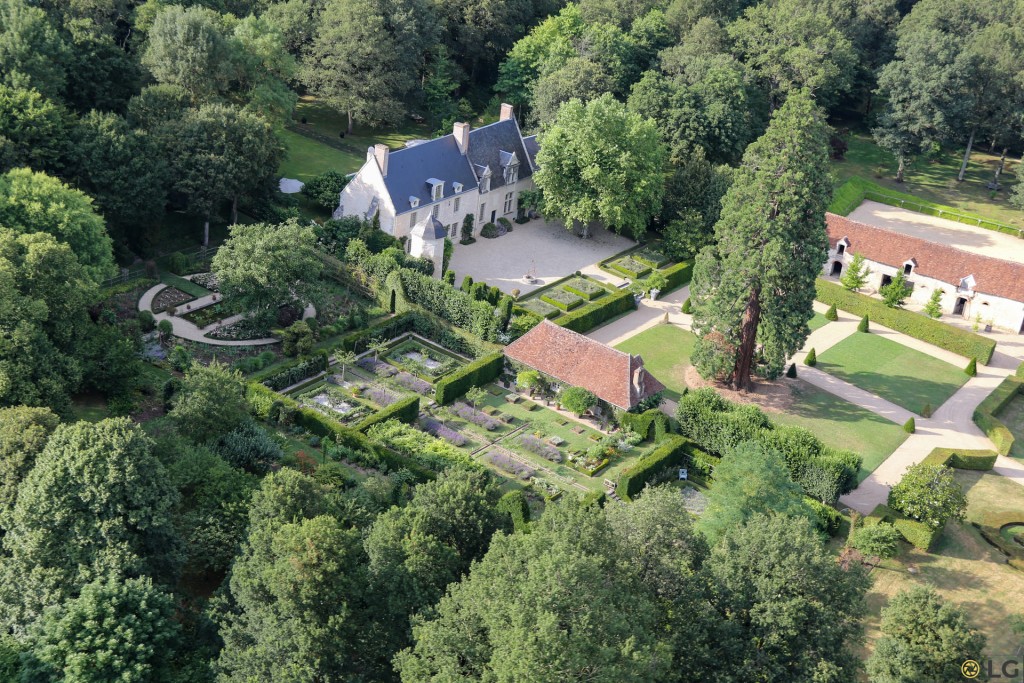Due to bad weather over the last few days, the Poulaines Gardens and Arboretum will unfortunately be closed from 1 November.
We look forward to seeing you in April 2025 when the gardens reopen: we promise you some surprises!
Due to bad weather over the last few days, the Poulaines Gardens and Arboretum will unfortunately be closed from 1 November.
We look forward to seeing you in April 2025 when the gardens reopen: we promise you some surprises!
The garden is open all year round and every day for groups

Because of the land and lordship of Poullayne, newly acquired by him through his wife, Lady Katherine du Bois, held in fief from the venerable treasurer and chapter of the said Sainte Chapelle, by virtue of the castle, castellany, and barony of Graçay.

The territory of Poulaines has been inhabited since Antiquity; by the end of the 1st century, it was served by a Roman road connecting Chabris in the north to Argentomagus in the south. From this same Gallo-Roman period also date the foundations of four estates, or *villæ*, in Cungy, Poulaines, Aubigny, and Chambon. The names of the first three localities are believed to echo those of their owners or masters: Congius, Paulinus, and Albinius.
Around the year 1000, nothing is known about the first lords of Poulaines, the founders of the priory of Saint-Saturnin, except that they were early vassals of the barony of Graçay. The presence of a seigneurial residence has been attested since the Early Middle Ages.
1340, Pierre III of Graçay is lord of Poulaines. Poulaines is part of the barony of Graçay.
1371, Sale of the barony of Graçay by Renaud VI de Graçay to Jean de Berry.
1392 or 1405, Donation of the barony of Graçay to the canons of the Sainte-Chapelle of Bourges, founded by Jean de Berry.

The territory of Poulaines has been inhabited since Antiquity; by the end of the 1st century, it was served by a Roman road connecting Chabris in the north to Argentomagus in the south. From this same Gallo-Roman period also date the foundations of four estates, or *villæ*, in Cungy, Poulaines, Aubigny, and Chambon. The names of the first three localities are believed to echo those of their owners or masters: Congius, Paulinus, and Albinius.
Around the year 1000, nothing is known about the first lords of Poulaines, the founders of the priory of Saint-Saturnin, except that they were early vassals of the barony of Graçay. The presence of a seigneurial residence has been attested since the Early Middle Ages.
1340, Pierre III of Graçay is lord of Poulaines. Poulaines is part of the barony of Graçay.
1371, Sale of the barony of Graçay by Renaud VI de Graçay to Jean de Berry.
1392 or 1405, Donation of the barony of Graçay to the canons of the Sainte-Chapelle of Bourges, founded by Jean de Berry.

The territory of Poulaines has been inhabited since Antiquity; by the end of the 1st century, it was served by a Roman road connecting Chabris in the north to Argentomagus in the south. From this same Gallo-Roman period also date the foundations of four estates, or *villæ*, in Cungy, Poulaines, Aubigny, and Chambon. The names of the first three localities are believed to echo those of their owners or masters: Congius, Paulinus, and Albinius.
Around the year 1000, nothing is known about the first lords of Poulaines, the founders of the priory of Saint-Saturnin, except that they were early vassals of the barony of Graçay. The presence of a seigneurial residence has been attested since the Early Middle Ages.
1340, Pierre III of Graçay is lord of Poulaines. Poulaines is part of the barony of Graçay.
1371, Sale of the barony of Graçay by Renaud VI de Graçay to Jean de Berry.
1392 or 1405, Donation of the barony of Graçay to the canons of the Sainte-Chapelle of Bourges, founded by Jean de Berry.

The territory of Poulaines has been inhabited since Antiquity; by the end of the 1st century, it was served by a Roman road connecting Chabris in the north to Argentomagus in the south. From this same Gallo-Roman period also date the foundations of four estates, or *villæ*, in Cungy, Poulaines, Aubigny, and Chambon. The names of the first three localities are believed to echo those of their owners or masters: Congius, Paulinus, and Albinius.
Around the year 1000, nothing is known about the first lords of Poulaines, the founders of the priory of Saint-Saturnin, except that they were early vassals of the barony of Graçay. The presence of a seigneurial residence has been attested since the Early Middle Ages.
1340, Pierre III of Graçay is lord of Poulaines. Poulaines is part of the barony of Graçay.
1371, Sale of the barony of Graçay by Renaud VI de Graçay to Jean de Berry.
1392 or 1405, Donation of the barony of Graçay to the canons of the Sainte-Chapelle of Bourges, founded by Jean de Berry.

The territory of Poulaines has been inhabited since Antiquity; by the end of the 1st century, it was served by a Roman road connecting Chabris in the north to Argentomagus in the south. From this same Gallo-Roman period also date the foundations of four estates, or *villæ*, in Cungy, Poulaines, Aubigny, and Chambon. The names of the first three localities are believed to echo those of their owners or masters: Congius, Paulinus, and Albinius.
Around the year 1000, nothing is known about the first lords of Poulaines, the founders of the priory of Saint-Saturnin, except that they were early vassals of the barony of Graçay. The presence of a seigneurial residence has been attested since the Early Middle Ages.
1340, Pierre III of Graçay is lord of Poulaines. Poulaines is part of the barony of Graçay.
1371, Sale of the barony of Graçay by Renaud VI de Graçay to Jean de Berry.
1392 or 1405, Donation of the barony of Graçay to the canons of the Sainte-Chapelle of Bourges, founded by Jean de Berry.

The territory of Poulaines has been inhabited since Antiquity; by the end of the 1st century, it was served by a Roman road connecting Chabris in the north to Argentomagus in the south. From this same Gallo-Roman period also date the foundations of four estates, or *villæ*, in Cungy, Poulaines, Aubigny, and Chambon. The names of the first three localities are believed to echo those of their owners or masters: Congius, Paulinus, and Albinius.
Around the year 1000, nothing is known about the first lords of Poulaines, the founders of the priory of Saint-Saturnin, except that they were early vassals of the barony of Graçay. The presence of a seigneurial residence has been attested since the Early Middle Ages.
1340, Pierre III of Graçay is lord of Poulaines. Poulaines is part of the barony of Graçay.
1371, Sale of the barony of Graçay by Renaud VI de Graçay to Jean de Berry.
1392 or 1405, Donation of the barony of Graçay to the canons of the Sainte-Chapelle of Bourges, founded by Jean de Berry.

The territory of Poulaines has been inhabited since Antiquity; by the end of the 1st century, it was served by a Roman road connecting Chabris in the north to Argentomagus in the south. From this same Gallo-Roman period also date the foundations of four estates, or *villæ*, in Cungy, Poulaines, Aubigny, and Chambon. The names of the first three localities are believed to echo those of their owners or masters: Congius, Paulinus, and Albinius.
Around the year 1000, nothing is known about the first lords of Poulaines, the founders of the priory of Saint-Saturnin, except that they were early vassals of the barony of Graçay. The presence of a seigneurial residence has been attested since the Early Middle Ages.
1340, Pierre III of Graçay is lord of Poulaines. Poulaines is part of the barony of Graçay.
1371, Sale of the barony of Graçay by Renaud VI de Graçay to Jean de Berry.
1392 or 1405, Donation of the barony of Graçay to the canons of the Sainte-Chapelle of Bourges, founded by Jean de Berry.

1991, purchase of the “château de Poulaines” by the current owners.
Priority was given to restoring the buildings to make the estate habitable.

From 1995 to 2014, purchase of the buildings of the Métairie de la Porte and of several plots from various owners, in order to reconstitute the Poulaines estate.
From 1998 onwards, creation of contemporary gardens around the existing plant species.
We created the waterway and repurchased the buildings of the métairie along with the surrounding plots, in order to restore the estate’s full agricultural tradition.

2012, first public opening for the European Heritage Days.
That same year, upstream work on the Poulain blocked the pond’s sluice gate below the manor, causing it to silt up.
In 2012, we were forced to drain it in order to clean it.
It has not been refilled to this day, even though it once hosted a highly diverse range of flora and fauna and served as a vital water reserve in case of emergency.
Moreover, without the ford crossing, accessing half the surface area of the estate has become difficult for mowing or hauling.

2014: The gardens of Poulaines were awarded the “Remarkable Gardens” label and opened to the public.
The estate took on its current form. We continue to bring it to life and shape it with the same passion. For over 30 years now…